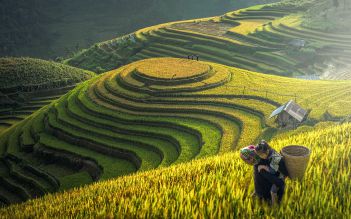Overview
The history of Cai Be Floating Market
Cai Be Floating Market stands out as one of the noticeable and influential markets in Mekong Delta together with Cai Rang, Phung Hiep, and Phong Dien Floating Markets. Although the truth of its origin is still unknown, many people still believe that the market was formed by vendors from 17th to 18th centuries, along with the formation of the delta. They were also known as the first ever cultivated and settled down in the delta for a long time. As far as "Gia Dinh Thanh Thong Chi" - a history book recorded, in 1732, Nguyen Lord declared to start constructing Long Ho Town at Cai Be Town which contributes to the formation of Cai Be market.
.jpg)
Cai Be Floating Market
The colorful atmosphere of Cai Be Floating Market
Tourists who never heard about floating markets are highly recommended to take a trip to Cai Be once before they leave Vietnam. The floating market is a huge marketplace where both sellers and buyers make deals on the water surface. The truth is the floating market is very common in the Mekong Delta where the people earn their lives on the waterway.
In general, the market is split into 2 distinguishing parts, buying places and selling places. Boats and sampans full of vegetables, fruits, and other agricultural products such as sweet potatoes from Vinh Long, pumpkins from Hau Giang, will be anchored along the banks of the river. Sample of merchandise is hung on a long pole in front of each boat to attract buyers. This is a common and unique sign can only found in the floating markets in Mekong Delta. Cai Be is considered the largest wholesale markets in the region. From 3 am in the early morning, vendors start their busy day. Spending their lifetime on the river, traders use their boats as “mobile houses” passed onto generation to generation. They eat, sleep, sing, cry, marry, die, and do other jobs on water.
.jpg)
Cai Be Floating Market
Moreover, you may acquire practical experience by accompanying with the locals to know how they catch fish. After sailing on the river, visitors enjoying homestay atmosphere, wandering around the fruit gardens, tasting local cuisine and immersing in the old stories.




